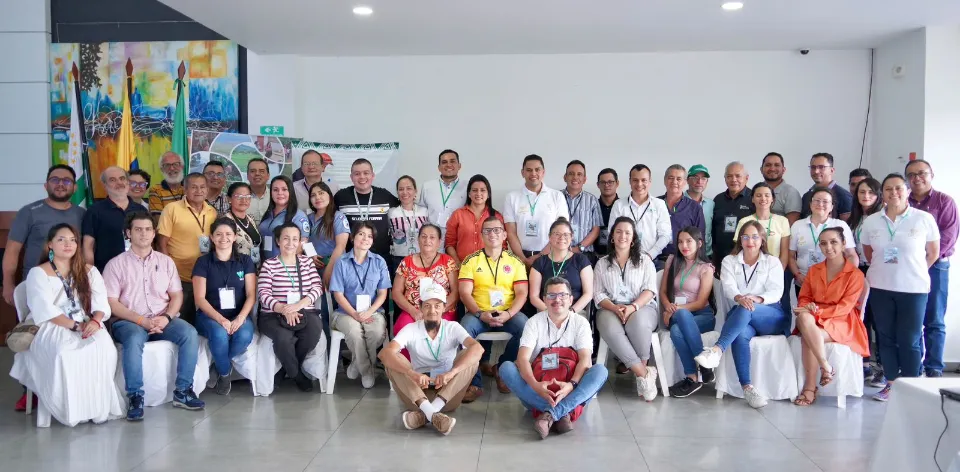 24/7/2024
24/7/2024
Environmental Planning in the Amazon Region: Key to Agricultural Planning

The workshop "Colombia Plans the Countryside: Amazon Region" also focused on promoting the sustainable and regulated use of forests, by managing information from different institutions, we aim to advance the analysis of the forest component, emphasizing non-timber forest products and agroforestry arrangements with peasant, Black, and Indigenous communities.
Florencia, Caquetá, (@UPRAColombia, @claudialili76). "Colombia Plans the Countryside: Amazon Region," led by UPRA in Florencia, Caquetá, was not only a workshop to collectively create inputs for rural agricultural planning but also an opportunity to socialize the Environmental Zoning Plan as part of fulfilling the Peace Agreement and to build actions that balance agricultural and environmental activities.
Claudia Liliana Cortés López, the general director of UPRA, stated: "Today, we are engaging in a reflective exercise starting from the agricultural frontier. From the agricultural uses that can be included in the environmental unification plans—this is the part our colleagues from the Ministry of Environment and Sustainable Development work on—we can identify productive alternatives that are different from those managed within the agricultural frontier and how we can use them jointly, environment and agriculture; from the development plans of territories, municipalities, and departments, so they effectively respond to the communities' needs for better income and quality of life."
Diego Rubiano, from the Directorate of Territorial Environmental Planning at MinAmbiente, said: "We must consider that the environmental sector and the agricultural sector are working together to achieve the ideal of sustainability, of sustainable production, both environmentally and socially as well as economically, in these territories that have been somewhat neglected for several decades. The goal of the Environmental Zoning Plan is to guarantee development for these territories that are starting to level up productively and ensure environmental sustainability while also guaranteeing the social and economic sustainability of the people living there. Thus, the Environmental Zoning Plan always seeks strong collaboration with communities to build solid governance."
Workshop attendees agreed that the only way to achieve a coherent plan is for the productive sector and the environmental sector to work together to ensure sustainability in these territories while protecting the environment.
"The Amazon is the first of the biomes outside the agricultural frontier we are working with, and we will also work in Orinoquía. Why? Because we have well-developed instruments within the agricultural frontier, and we need to develop and challenge ourselves to support peasant communities that are not necessarily within the agricultural frontier but are being identified by the Departmental Development Plans," emphasized the UPRA director.
From the regions, Juan Pablo Jaramillo Murcia, Secretary of Environment and Agriculture of Caquetá, said: "Here, it is also important to recognize that we must work hand in hand with CorpoAmazonia, directly with municipalities, local territorial entities, and understand the updates to their land-use planning schemes because this is the guide, the basis, for knowing how we can sustainably use the countryside and the environment within our Amazonian territory."
We also focused on promoting the sustainable and regulated use of forests, emphasizing non-timber products and agroforestry arrangements with peasant, Black, and Indigenous communities.
Benilda Ducuaro Oviedo, a member of Agrosolidaria Florencia from the Alto Caldas village, highlighted: "We women are also starting to work on recovering deforested areas, conserving water sources by planting fruit trees that provide us with food and shade to prevent water loss. We are working with various organizations to establish agroforestry systems based on the area each producer has, transforming products like copoazú fruits, which are then sold."
"We have been working for eight years on using Amazonian fruits in an empowerment strategy with local communities, including peasants and Indigenous people, through comprehensive support. We aim to immerse producers in traditional agroforestry systems, or chagras, with value chains. This ensures that the diverse crops in their chagras and mixed gardens have a productive sustainability chain. We have conservation agreements to protect important ecosystems in the Amazon," concluded Diego Francisco Castro, representative of Pura Amazonia.

